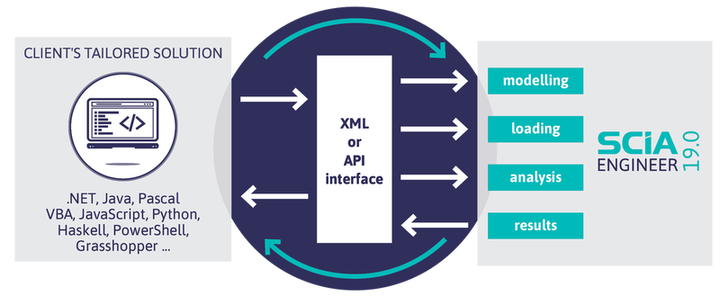
Reduce the time spent on your project with SCIA Engineer 19 that expands the array of possibilities for multi-storey buildings, streamlines workflows for various analysis types and increases the speed of basic operations.
SCIA Engineer 19 brings multiple workflow improvements as well as many new functionalities that will help you handle the analysis of multi-storey buildings and other civil engineering structures with minimum effort while simultaneously increasing the overall efficiency of standard day-to-day tasks.
With SCIA Engineer 19 you will deliver your projects faster thanks to (i) the design accelerated by automation in all the design modules, (ii) improved understanding of the response to applied loads and (iii) optimisation through parametric design and integration of SCIA Engineer into any tailored solution.
Deliver accurate, economical and clearly documented design with minimum effort thanks to new functions like automated design of practical reinforcement in concrete beams, enhanced optimisation for studs in composite floors, camber in design of steel members, etc.
Have full control over your structure and understand its response using analysis of masonry walls with contact elements, integration members for shear walls or bridges, absence for simulation of constructions stages, stiffness modifiers, extended display options for results, etc.
Move your work to a next level with the parametric design capabilities of SCIA Engineer. Take the advantage of the updated XML interface or a brand-new Open API to build your own solution to deliver the most economical, eye-pleasing variant of the project fast and with minimum of manual work.
Composite design
Analysis & Results
Composite floors
- Economical stud design taking into account building practice requirements
- More robust AutoDesign thanks to improved handling of detailing conditions
- Faster and more economical AutoDesign for beams with multiple web openings
- Shorter, succinct standard output
- Consistent references to applied code formulas in the detailed output

Analysis & Results
Masonry
Integration member
Mode filtering
Model modifiers
Result improvements
Click for more
Interoperability & BIM
General Usability
- Improved handling of buckling lengths after model modification
- Clearer dialogue for load case combinations
- Automatic connection of all model elements before calculation
- Fast and clear detection of instabilities in the model
- Better control over formatting of tables in Engineering Report
- Speed improvements in standard actions like open / save project, copy / move entities, work with results and checks on 2D members for extensive envelope combinations, open long Engineering Report, etc.

Find out how you can accelerate your projects with SCIA Engineer 19. Get your free trial now!
Do you want to learn more about SCIA Engineer? Please reach out!
SCIA UK Office
5 Charter Point Way, Ashby Park,
LE65 1NF Ashby-de-la-Zouch
United Kingdom
SALES INFORMATION
Telephone: (+44) 01530 448 000
Email: sales@scia.net
SUPPORT INFORMATION
Telephone: (+44) 01530 448 008
Email: support@scia.net
ESA_XML
OpenAPI
Click for more
Fast and practical design of shear reinforcement
- Built-in templates for stirrup shapes for different cross-section types
- Automatically considered effect of stirrups on longitudinal bars
- Practical distribution of stirrups along the span using stirrup-zones
- Optional symmetrical distribution along the span

Practical design of reinforcement in columns, beams and ribs
- New reinforcement template for columns with corners-only bars
- Uniform distribution of longitudinal reinforcement along the length of the column
- Uniform distribution of reinforcement in beams and ribs above supports
- User-defined minimum length of the bars in beams and ribs
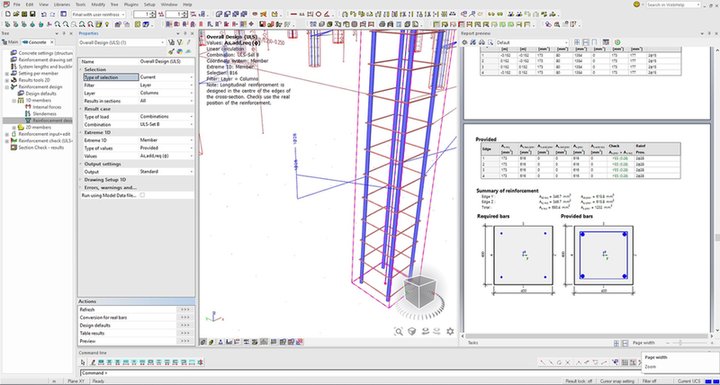
Automatic design of real reinforcement in 1D members
- Automatic conversion of calculated reinforcement areas into real bars
- Use of real reinforcement bars in all ULS/SLS checks and in the section check
- Optional manual modification of the automatically generated reinforcement
- Export of the converted reinforcement to IFC & XML
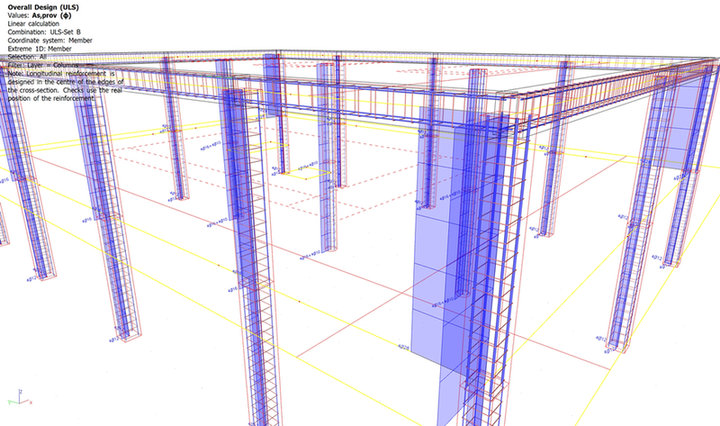
Real reinforcement in 2D members
- Design of real bars and reinforcement meshes in 2D members
- All types of reinforcement considered in checks as well as in the calculation of punching, cracks and long-term deflections
- Export all types of reinforcement to ASF file
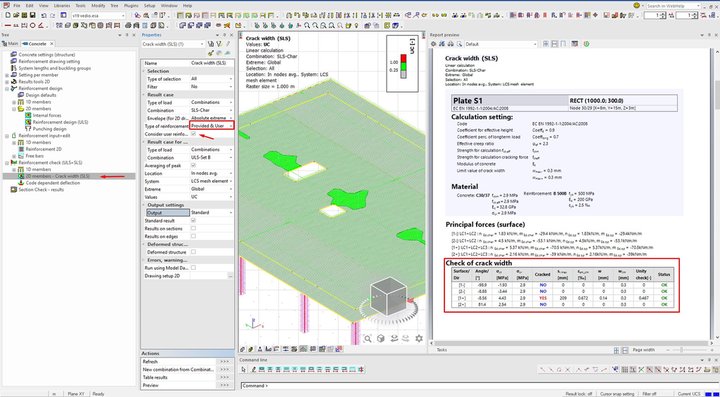
Serviceability checks
- EN 1993 and SIA 263 supported
- SLS check for permanent and variable loads in one go
- Support for camber in design
- Simplified input of design criteria
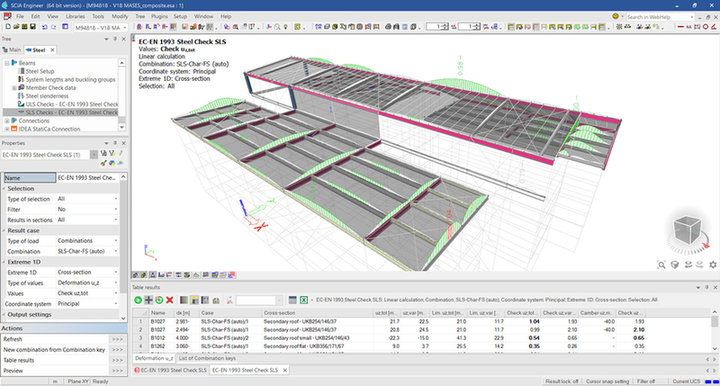
Steel design
- Calculation of plastic hinges updated for EN 1993-1-1
- Determination of plastic hinge moment resistance taking into account the national-annex specified safety factors
- Open checks now support paired cross-sections (double angles, back-to-back channels, etc.)
- Plastic hinges available with 64-bit version
- SIA 263 available in 64-bit version
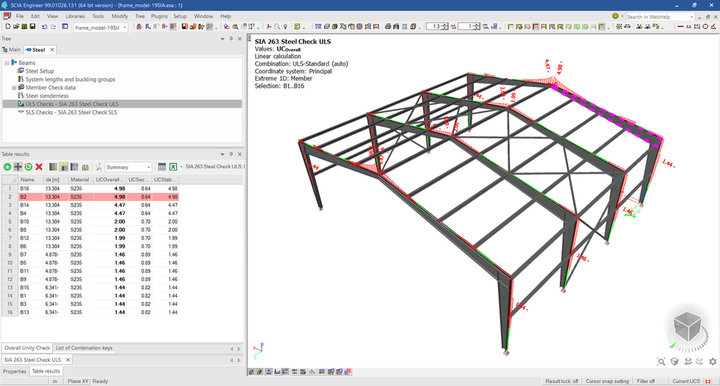
Masonry
- Streamlined workflow for linear analysis with masonry members
- Simple editing of orthotropy parameters for reduction of arching effect
- Advanced non-linear capabilities with compression only hinges on edges of a masonry wall
- Contact elements for edges suitable also for other applications like cross-laminated timber, calculation of cracked/delaminated members, etc.
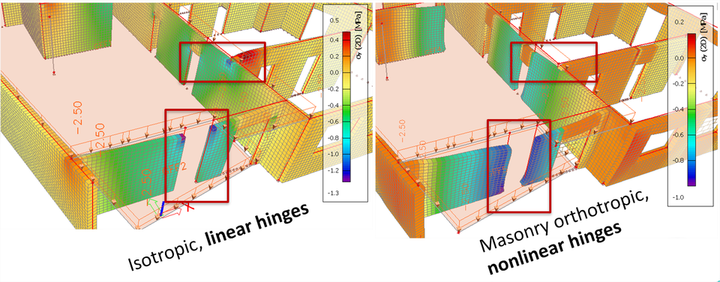
Integration member
- Integrates internal forces from defined perimeter, which is necessary for design of e.g. shear walls, etc.
- Easy and straightforward definition of the “substitute” integration member
- Integrates internal forces from 2D and 1D members
- Applicable for linear as well as non-linear analysis
- No impact on others results on the rest of the structure

Mode filtering
- Speeds up the response spectrum analysis while meeting the condition of 90% of moving masses
- Reduces the number of required eigenmodes
- Up to 10 times lower number of modes required
- Significantly shortens the calculation time

Model modifiers
- Absences and stiffness modifier unified in one modification group
- Attached to a specific load case(s)
- Included in the standard project type (no special project required)
- Suitable for e.g. simulation of construction phases, long-term response of structures due to varying E modulus, etc.
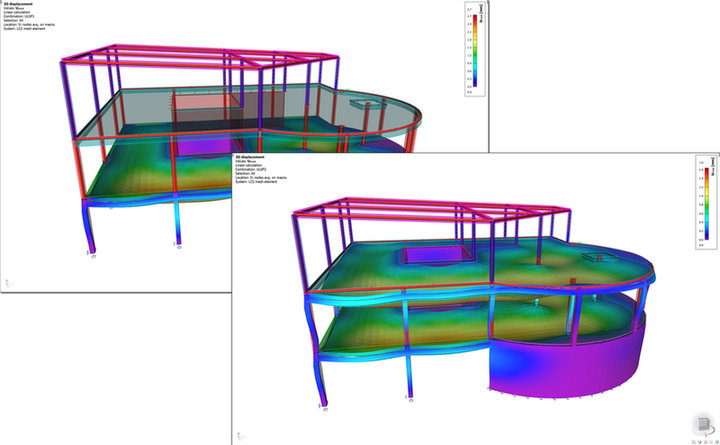
Result improvements
1D members:
- Easy detection of critical points on multi-span beams
2D members:
- Layers applicable to sections on 2D members
- New selection options for sections
- Resultant on sections
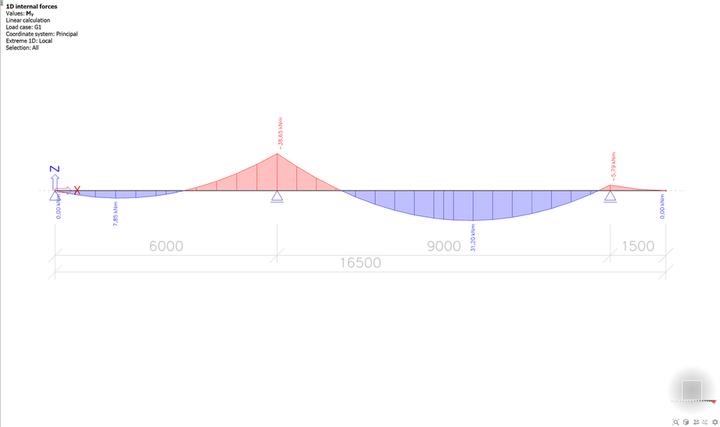
ESA_XML
- Support for creation of Engineering Report
- Export of Engineering report into RTF, PDF, etc.
- Update of a project using Excel file prepared in SAF format
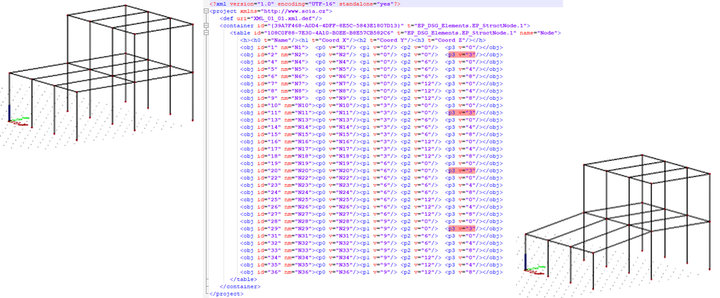
OpenAPI
- Easily connects SCIA Engineer to your solution
- Supports many programming languages: C#, Python, VBA, ...
- Provides functions to open SCIA Engineer project, define materials and cross-sections, create beams and slabs, define loads and other model data, run linear analysis and read the results
- Supports non-linear and stability analysis via a template project
